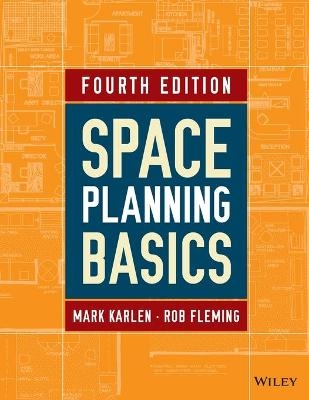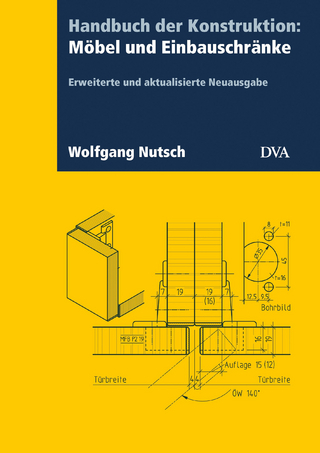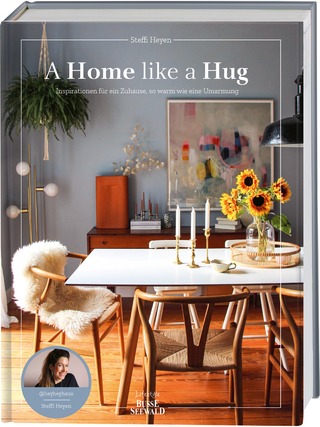
Space Planning Basics
John Wiley & Sons Inc (Verlag)
978-1-118-88200-9 (ISBN)
Conquer the complexity of interior design with a logical, methodical approach
Space Planning Basics is a definitive introduction and principle resource for thousands of designers. With step-by-step methodology based on the author’s several decades of design experience, this authoritative guide has become the de facto reference for an entire generation of designers. This updated fourth edition includes digitized drawings, diagrams, and matrices throughout, and newly added supplemental photographs. The text has been revised to reflect the latest developments in sustainable and universal design, including coverage of daylighting, benchmarking, LEED system standards, and green code issues. The companion website provides AutoCAD files, intrustor videos and matrices to give you a deeper real-world understanding of the design process. This book is perfect preparation for the NCIDQ exam.
Proper space planning goes way beyond sketching a preliminary floor plan. Successful implementation includes a balanced integration of code compliance, system support, and adherence to the client’s functional needs. Sustainability adds a new, important layer of complexity. This book shows you how to approach space planning in a way that ensures all considerations are met, and nothing gets lost in the process.
Adopt an organized and comprehensive planning methodology
Work effectively with dimensionally challenging spaces
Consider building systems, codes, lighting, acoustics, and more
Develop advanced skills and conquer new challenges
Space planning encompasses many components and processes, making a comprehensive reference necessary for mastery of the field. Space Planning Basics is a thorough, methodical resource that gets you started on the right track, with plenty of room for creativity.
MARK KARLEN, PHD, AIA, has been practicing, teaching, and writing about interior design and architecture for several decades. A practicing architect, he currently teaches at Philadelphia University, in Pennsylvania. ROB FLEMING, AIA, LEED® AP BD&C, co-founded the Master of Science in Sustainable Design at Philadelphia University, where he currently serves as the Program Director.
Preface. ix Introduction. xi
Chapter 1 Planning Methodology 1
Defining Terms and Intent 2
The Synthesis Gap 3
The Design Program 5
Criteria Matrix 12
Prototypical Plan Sketches 14
Completing the Criteria Matrix 21
Relationship Diagrams 28
A Final Note on Planning Methodology 33
Recommended Reading 34
Chapter 2 The First Planning Steps: Bubble Diagrams and Block Plans 35
Bubble Diagramming 35
Space Planning Exercises 41
Block Planning 42
Recommended Reading 46
Chapter 3 Small and Dimensionally Demanding Spaces 47
Human Factors 52
Barrier-Free Design Standards 53
Travel and Egress 54
Furniture Planning and Placement 59
Recommended Reading 62
Chapter 4 The Building Shell and Major Systems 63
The Building Shell 64
Plumbing Systems 67
Heating, Ventilating, and Air-Conditioning Systems 69
Recommended Reading 72
Chapter 5 Important Influencing Factors 73
Building Codes 73
Green Building Rating Systems 75
Lighting Design 75
Acoustical Planning 81
Planning Rules of Thumb 84
Flexibility/Multiuse 85
Furniture 86
Spatial Quality 86
Interior Design Specialties 87
Recommended Reading 88
Chapter 6 Developing a Rough Floor Plan 91
Getting Started 93
Construction Reality 94
Start with Plumbing 95
Major Spaces Next 96
Circulation Spaces 96
Basic Room Allocations 98
Furniture and Equipment 98
Storage and Filing 101
Spatial Quality 101
Sustainability Objectives 103
Review 103
Revisions 105
Recommended Reading 109
Chapter 7 Refining the Solution 111
Refining the Rough Plan 112
The Preliminary Floor Plan 113
Drawing Quality and Techniques 114
Recommended Reading 124
Chapter 8 Developing Skills beyond the Basic Level 125
Basic Implications 125
Programs within Programs 127
Open Plan/Systems Furniture 129
The Speculative Office Building 130
Future Expansion 131
Planning New Buildings 132
A Final Note 134
Chapter 9 Stair Design Basics 135
Codes, Dimensions, and Configurations 148
Stair Design Case Studies—Phase I 168
Stair Design Case Studies—Phase II 179
Recommended Reading 189
Appendix A: Stair Terminology. 191
Appendix B: Design Programs and Building Shells. 193
Design Program 1A: Suite for Dual Pediatric Practice 193
Design Program 1B: Township Youth Organization 195
Design Program 1C: A Small Accounting Firm Suite 197
Design Program 2A: Regional Management Office 199
Design Program 2B: Popular Culture Institute 201
Design Program 2C: Meeting/Marketing Facility 204
Design Program 2S: University Career Counseling Center 206
Design Program 3A: Market Research Group 209
Design Program 3B: The Cosmopolitan Club 212
Design Program 3C: Community Counseling Consortium 213
BUILDING SHELLS 216
Building Description 1A 216
Building Description 1B 218
Building Description 1C 219
Building Description 2A 220
Buiding Description 2B 222
Building Description 2C 223
Building Description 2S 225
Building Description 3A 225
Building Description 3B 228
Building Description 3C 229
Index. 231
| Verlagsort | New York |
|---|---|
| Sprache | englisch |
| Maße | 216 x 274 mm |
| Gewicht | 476 g |
| Themenwelt | Kunst / Musik / Theater ► Design / Innenarchitektur / Mode |
| Sachbuch/Ratgeber ► Freizeit / Hobby ► Hausbau / Einrichten / Renovieren | |
| Technik ► Architektur | |
| ISBN-10 | 1-118-88200-8 / 1118882008 |
| ISBN-13 | 978-1-118-88200-9 / 9781118882009 |
| Zustand | Neuware |
| Haben Sie eine Frage zum Produkt? |
aus dem Bereich


